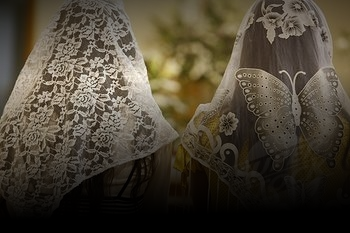
A: The tradition of head coverings for women has its roots in St. Paul, who writes both that women ought to pray with their heads covered, and men with their heads uncovered, owing to the very imagery of our bodies as images of Christ and the Church (cf. 1 Corinthians 11:2ff). As late as the Code of Canon Law 1917 confirms that it is “consistent with the ancient discipline.” (Canon 1262)
However, even in that statement, it is clear that this practice is not dogmatic, but merely a matter of “discipline,” or custom. A judgment of the Congregation for the Doctrine of the Faith (Inter Insigniores) issued in October of 1976 stated that,
[T]hese ordinances, probably inspired by the customs of the period, concern scarcely more than disciplinary practices of minor importance, such as the obligation imposed upon women to wear a veil on their head . . . such requirements no longer have a normative value.
When the Code of Canon Law was revised in 1983, the prior code was essentially repealed (except where the new Canons re-promulgated prior laws. Thus head-coverings for women are not normative.
That said, they are not forbidden, and many women have found them to be beautiful expressions of their reverence for Christ.